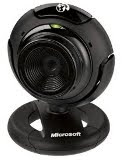- Go to the following folder:
/home/YourLinuxUserName/.Skype - Delete the file shared.xml.
- Restart Skype. The Skype folder is a hidden folder - please check Show hidden files in your file browser to view and access it.
Sources & References:
"flpsed is a WYSIWYG pseudo PostScript editor. "Pseudo", because you can't remove or modify existing elements of a document. But flpsed lets you add arbitrary text lines to existing PostScript 1 documents. Added lines can later be reedited with flpsed. Using pdftops, which is part of xpdf one can convert PDF documents to PostScript and also add text to them. flpsed is useful for filling in forms, adding notes etc."The GUI is a little rudimentary, but you only need to click on the document at the point that you want to insert your text and then type away!
jogga-desktop kernel: [ ##.######] serial8250: too much work for irq18"Of course, Ubuntu is far bigger than Unity. And the needs of the Ubuntu community, and users of Ubuntu, are far more diverse than simply Unity could address. So I’m proud of the fact that the Ubuntu community publishes the whole expression of software freedom across its archives. Kubuntu continues to improve and set a very high standard for the KDE experience. Lubuntu, the LXDE based expression of Ubuntu, is moving towards being 100% integrated. There is unique work being done in Ubuntu for users of the cloud and other server-oriented configurations. While we can be proud of what’s been achieved in Unity, we are equally proud of the efforts that go into ensuring that the full range of experiences is accommodated, to the extent possible with the effort put in by our huge community, under the Ubuntu umbrella."You can even run Natty using Gnome2!
Source: Mark Shuttleworth A Leap Forward (emphasis mine)
sudo cp /opt/google/chrome/libgcflashplayer.so /usr/lib/chromium-browser/plugins
sudo chmod ugo+x /usr/lib/chromium-browser/plugins/libgcflashplayer.so
 |
| The VX-1000 LifeCam |
lsusb into a terminal), but sound and video stubbornly refused to co-operate. I assumed that I would never been able to get it to work with Ubuntu and I'd even started to consider alternatives - Then I plugged it into 10.04!.LD_PRELOAD=/usr/lib/libv4l/v4l1compat.so skypeskype and no amount of editing in the Startup Applications' Preferences dialog would force the v4l application to load.#!/bin/bash
# Start Skype with video enabled
LD_PRELOAD=/usr/lib/libv4l/v4l1compat.so skypechmod +x /home/jogga/skype.shcd /home/jogga/Downloads/gspca-2.12.25makemake gspca_sonixj.kosudo make install"Skype will support Microsoft devices like Xbox and Kinect, Windows Phone and a wide array of Windows devices, and Microsoft will connect Skype users with Lync, Outlook, Xbox Live and other communities. Microsoft will continue to invest in and support Skype clients on non-Microsoft platforms."Undoubtedly, time will tell just how much investment and support will be forthcoming: but let's be honest if such support merely continues in the same vein as Skype's efforts on behalf of the Linux community, it's unlikely to be very impressive!
Source: Microsoft Press Release (emphasis added)
 Notwithstanding the Canonical Design Team's protestation that its new Unity Launcher is not a dock bar, it's difficult to resist the temptation of comparing it to alternatives like AWN and Docky.
Notwithstanding the Canonical Design Team's protestation that its new Unity Launcher is not a dock bar, it's difficult to resist the temptation of comparing it to alternatives like AWN and Docky. "Note: On Ubuntu 11.04 installing the 'firmware-b43-installer' package takes care of the downloading and installation of the b43 driver." Source: Ubuntu DocumentationThe easiest way to install the firmware is from Synaptic.
"The release of Ubuntu 11.04 has seen the arrival of a new look and feel for Ubuntu. A whizzy, new launcher and dash, and a clever workspace manager are some of the biggest changes. Take a look at what’s new and then feel free to choose between the classic and new desktop experiences at login."